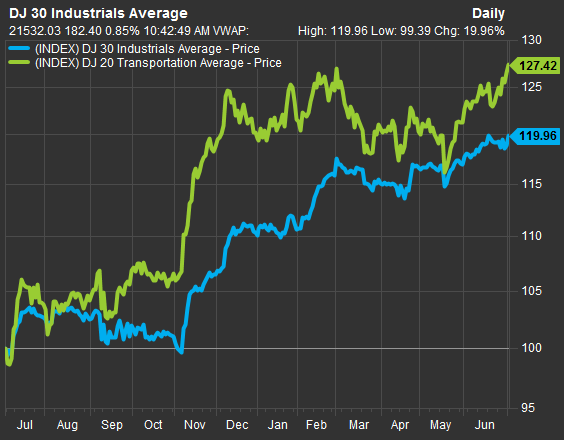The stock market has been on a tear this year and more gains may be ahead, according to what some say is the oldest market indicator on Wall Street.
The Dow Jones industrial and transportation averages hit all-time highs on Monday, confirming each other’s upside trends and triggering a “buy” signal in the market, according to the “Dow theory.”
The theory was created by Charles Dow in the early 20th century (after whom the two indexes above are named after) and it examines the relationship between the transports and industrial averages. Simply put, it states that major trends must be confirmed by both the transports and industrials indexes. Confirmation of a trend higher sends a “buy” signal in the market; one of a trend lower sends a “sell” signal in the market.
The fundamental basis for the theory is that transports stocks are considered the backbone of the economy and so if they are doing well, then the whole economy must be doing well, the thinking goes.
Dow industrials (blue) vs transports (green) over 1 year

Source: FactSet
“It is not always right, and is subject to interpretation, but it has been right far more than it has been wrong,” Jeff Saut, chief investment strategist at Raymond James, said in a note last month. He also said that Dow theory “called” the start of the market downturn in the early 2000s and gave a “sell” signal before the start of the Financial Crisis.
The Dow entered Monday’s session having notched its best first-half performance since 2013.
Source: Investment Cnbc
The oldest stock market indicator on Wall Street just flashed a buy signal